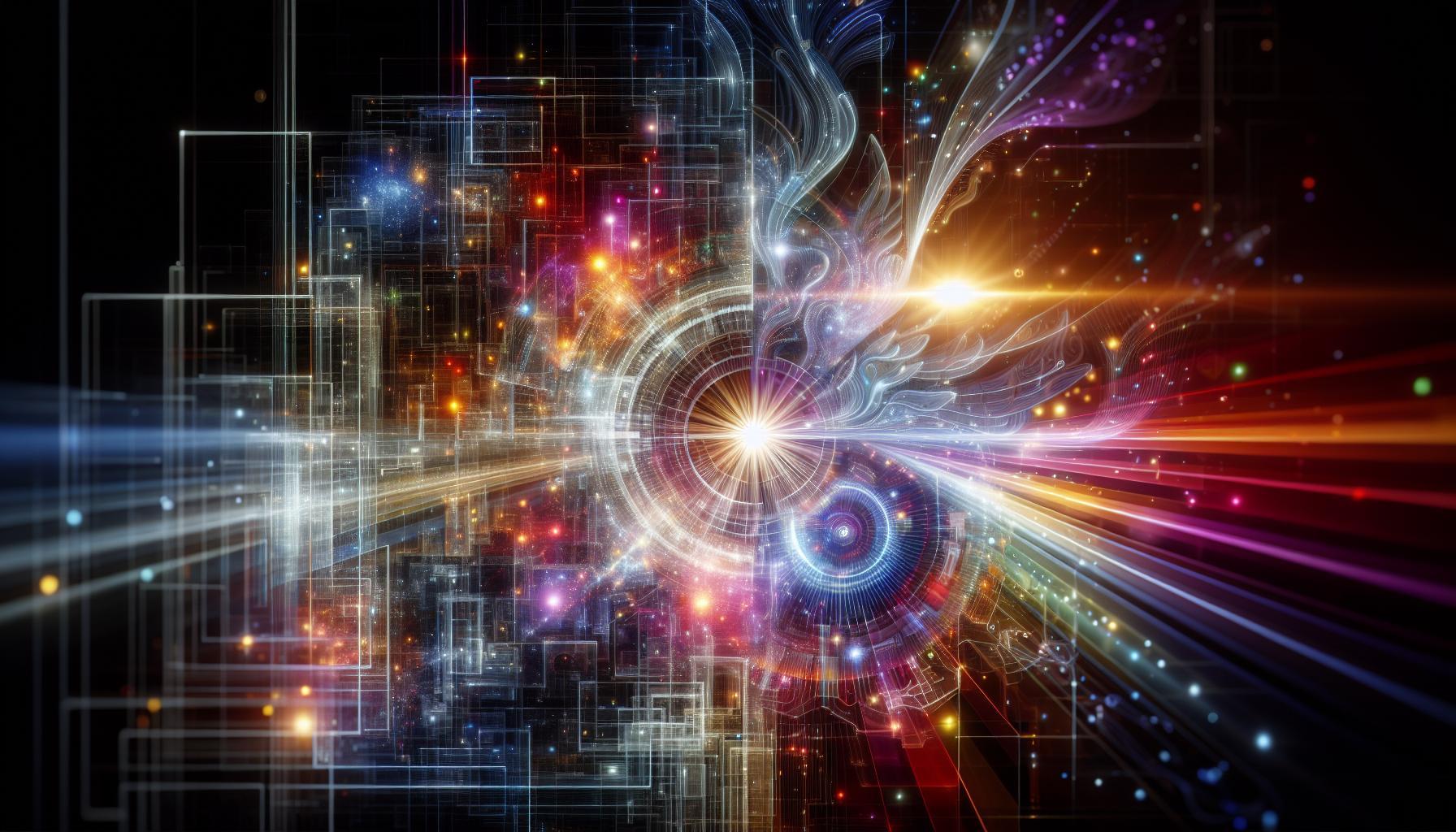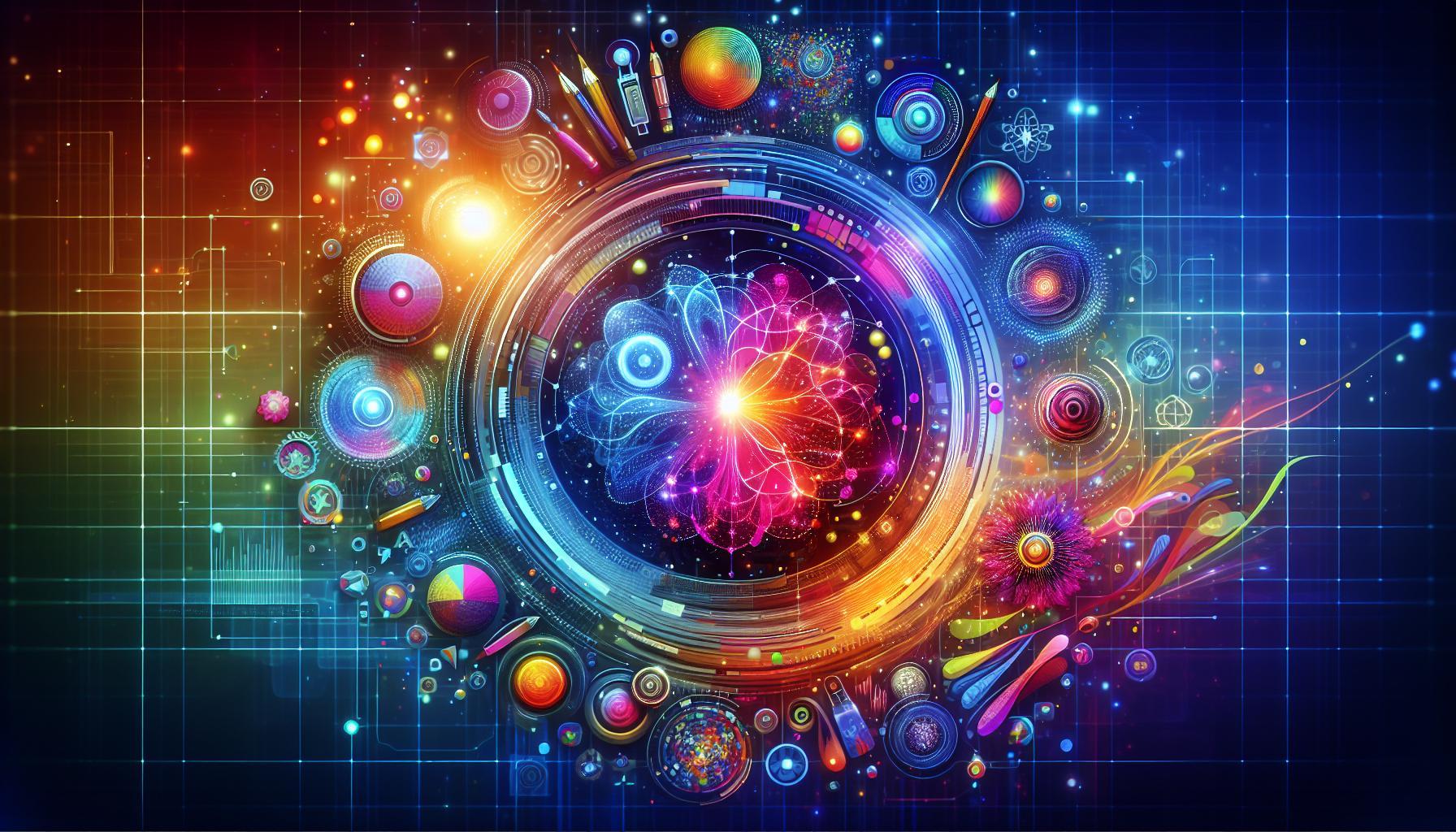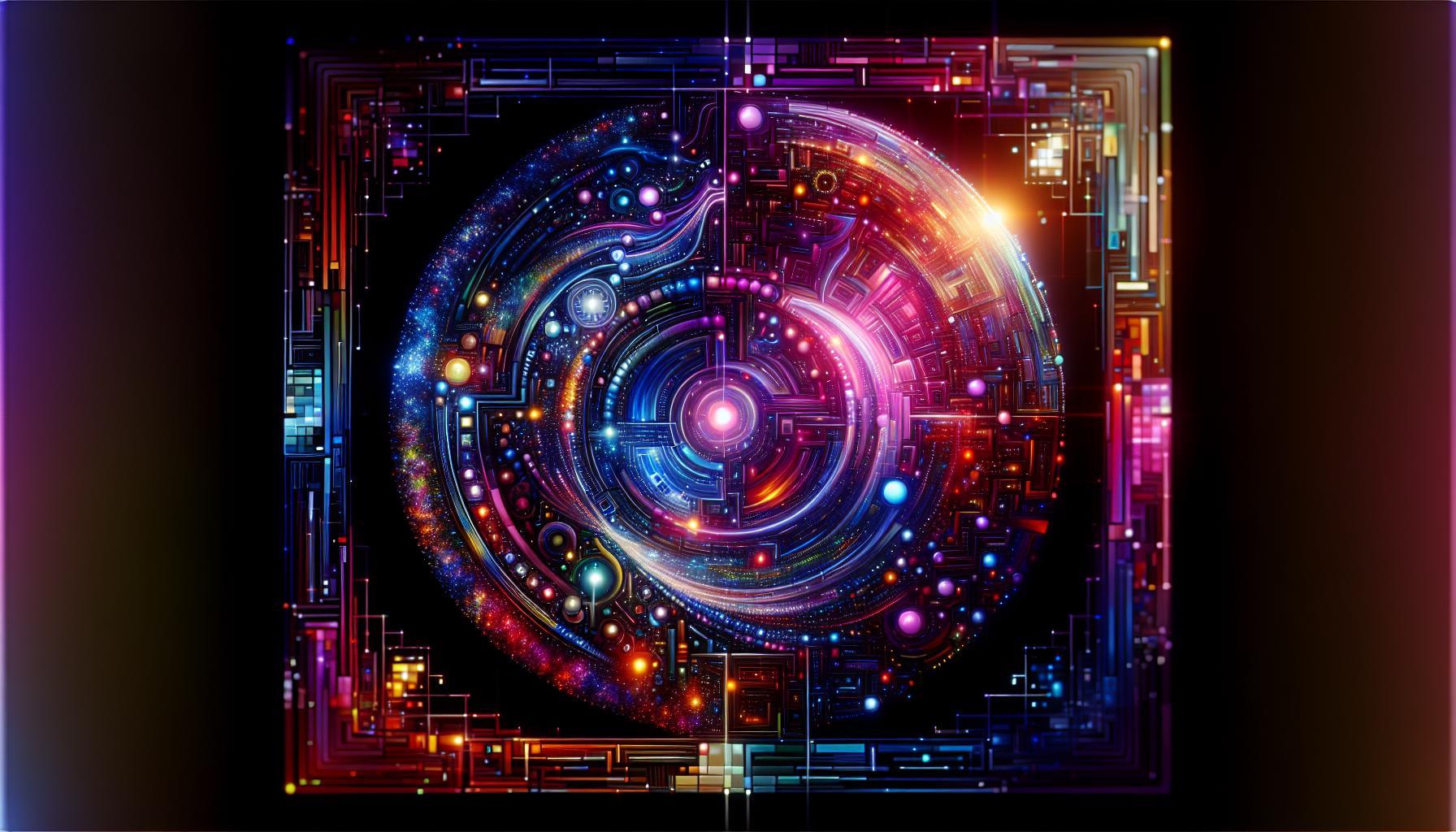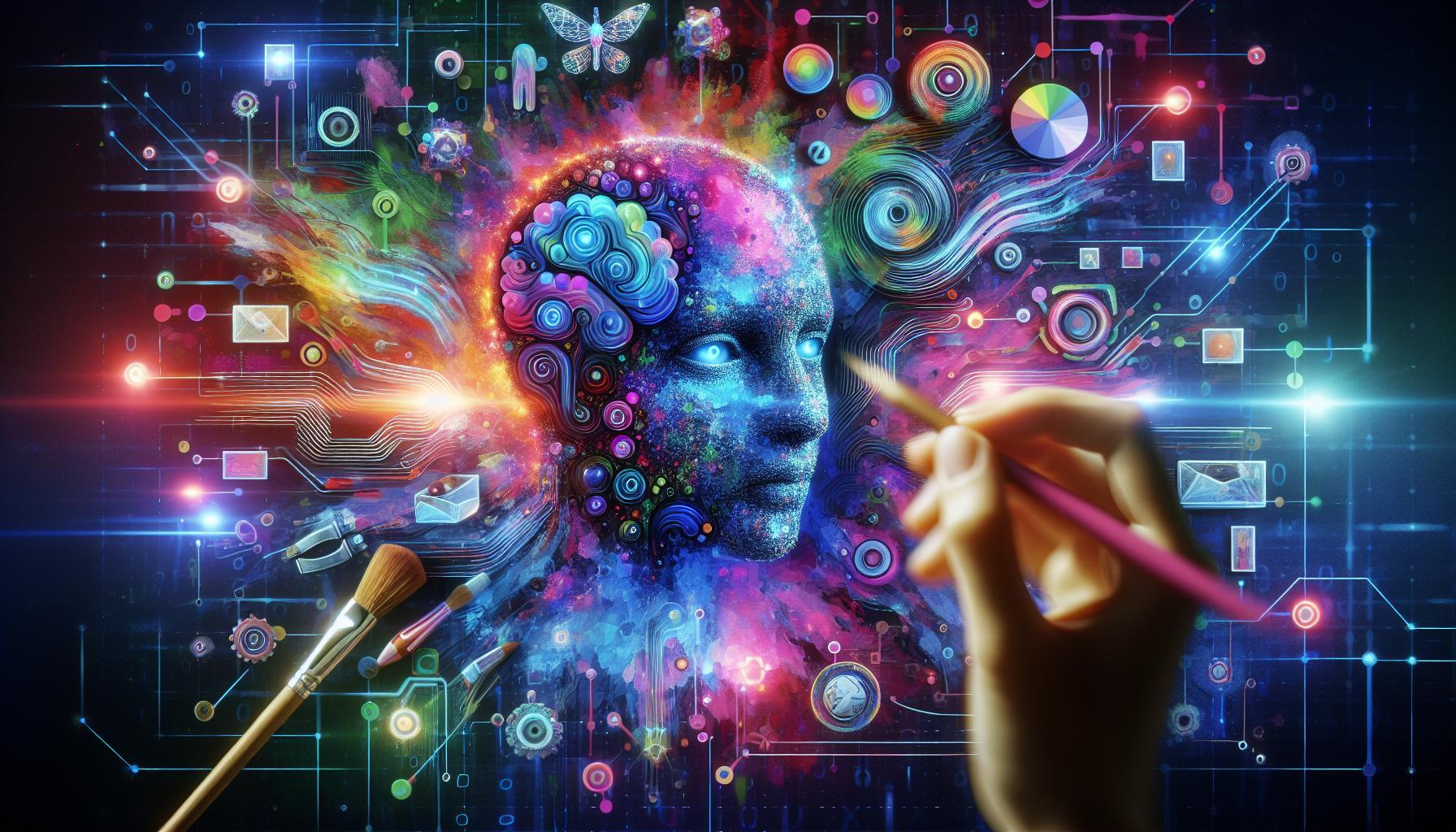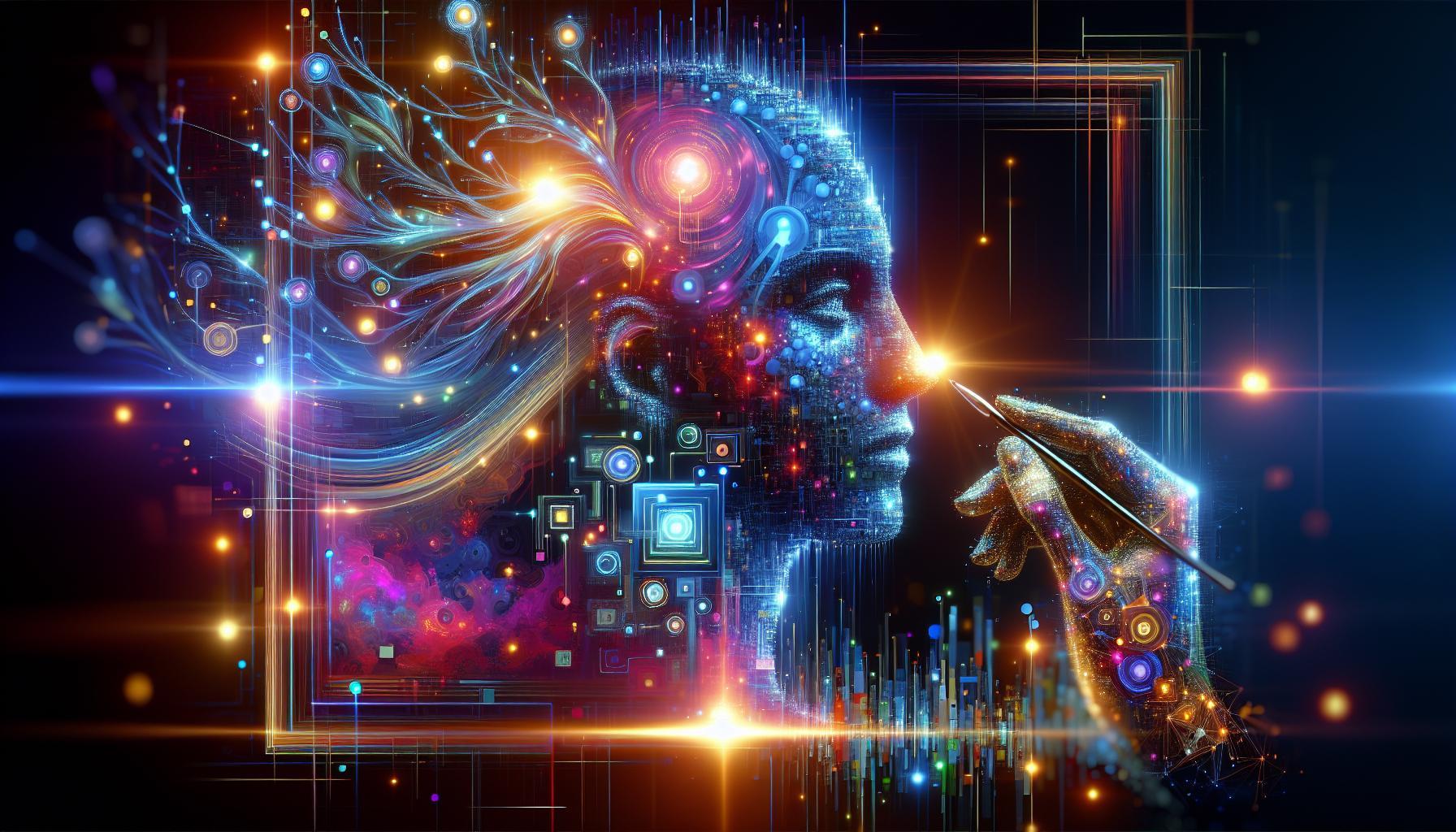Crafting exceptional images with Midjourney often hinges on the art of precision prompting. Understanding how to articulate your vision effectively not only enhances creativity but also ensures your outcomes align with expectations. This guide delves into techniques for refining your prompts, empowering you to achieve stunning and specific AI-generated visuals that resonate with your unique artistic intent.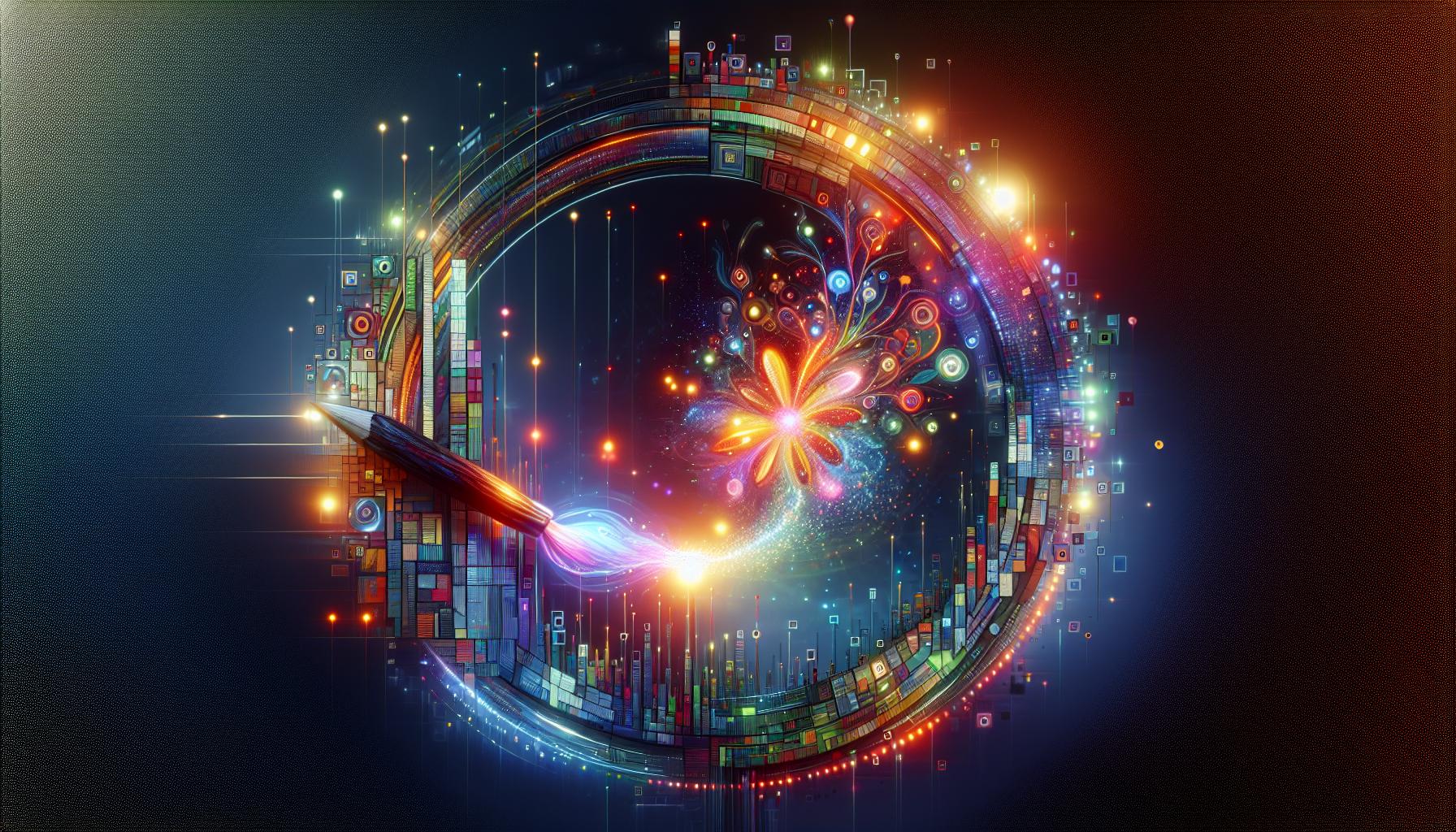
Understanding the Basics of Midjourney: What You Need to Know
In the rapidly evolving world of AI-generated imagery, understanding the fundamental concepts behind tools like Midjourney is essential for artists, designers, and businesses alike. Midjourney enables users to create stunning visuals simply by supplying descriptive text prompts. However, to effectively convey your vision and extract the best results, there’s a significant art to crafting those prompts. This guide aims to demystify the process and provides actionable insights for maximizing the potential of Midjourney through precise prompting techniques.
Grasping the Core Components of Midjourney
At its essence, Midjourney interprets input prompts to generate unique images. Here’s a breakdown of critical factors to consider when formulating your request:
- Clarity: Clearly articulating your ideas is paramount. The more specific you are, the more aligned the result will be with your expectations.
- Detail: Include aspects like color, mood, style, and composition. For instance, rather than saying “a sunset,” try “a vibrant orange and purple sunset over a calm ocean with silhouetted palm trees.”
- Context: Provide context or themes guiding the imagery. A prompt like “an ancient magical forest during twilight” sets a distinct tone compared to “a forest.”
Tips for Effective Prompt Engineering
Engagement with Midjourney thrives on the user’s ability to iterate prompts effectively. Here are some practical steps to enhance your efforts:
| Step | Description |
|---|---|
| 1. Experiment | Don’t hesitate to try various wording and styles. Adjust your descriptions based on outcomes. |
| 2. Analyze Results | Review the generated images, assess what’s effective or not, and refine your prompts accordingly. |
| 3. Incorporate Feedback | Seek input from others on your imagery. Outside perspectives can offer valuable insights into how your prompts can be improved. |
| 4. Study Successful Prompts | Investigate prompts shared by the community for inspiration and insights into what yields compelling outputs. |
Building a repertoire of effective strategies can make all the difference in learning how to get exactly what you want from Midjourney. As users embrace the intricacies of precision prompting, they often uncover new realms of creativity, leading to striking and personalized images that resonate with their artistic vision.
Crafting Your Prompt: The Art of Precision in AI Imagery
Crafting prompts for AI imagery can feel like an art form, where every word plays a crucial role in shaping the final creation. The ability to articulate your vision with precision can dramatically affect the output you receive from platforms like Midjourney. Whether you’re a seasoned designer or just starting to explore the capabilities of AI-generated art, understanding how to effectively communicate your ideas is essential to getting exactly what you want.
When drafting a prompt, consider these key aspects to ensure clarity and specificity:
- Detail Level: The more descriptive you are, the better. Instead of saying “a cat,” specify “a fluffy orange tabby lounging on a sunny windowsill.”
- Style and Mood: Indicate the artistic style you envision. Terms like “impressionist,” “surreal,” or “minimalist” set the tone for your request.
- Color Palette: Describing the colors can significantly influence the atmosphere. Use phrases like “vibrant sunset hues” to guide the AI.
- Context and Setting: Provide background elements to enrich your imagery. For example, “a medieval knight standing in a lush green forest at dusk” gives the AI a detailed scene to work with.
Example Prompt Breakdown
To further illustrate the process, let’s analyze a basic prompt and how it can be enhanced. Starting with a simple prompt like “a bicycle,” we can transform it into a rich and layered request:
| Basic Prompt | Enhanced Prompt |
|---|---|
| A bicycle | A vintage red bicycle with a wicker basket, parked against a rustic brick wall, bathed in golden hour light |
In this enhanced scenario, we introduce elements that evoke imagery and emotion, guiding the AI to produce not just any bicycle, but one that fits a specific aesthetic and feel. This level of detail ensures that your request resonates with the algorithm, ultimately leading to a more satisfying visual outcome.
As you experiment, remember that finding the right balance in your prompts can take practice. Continuously refine your approach, paying attention to what works and what doesn’t. Engaging in the creative process of prompt crafting enhances not only your results but also your understanding of how AI can mirror your artistic visions.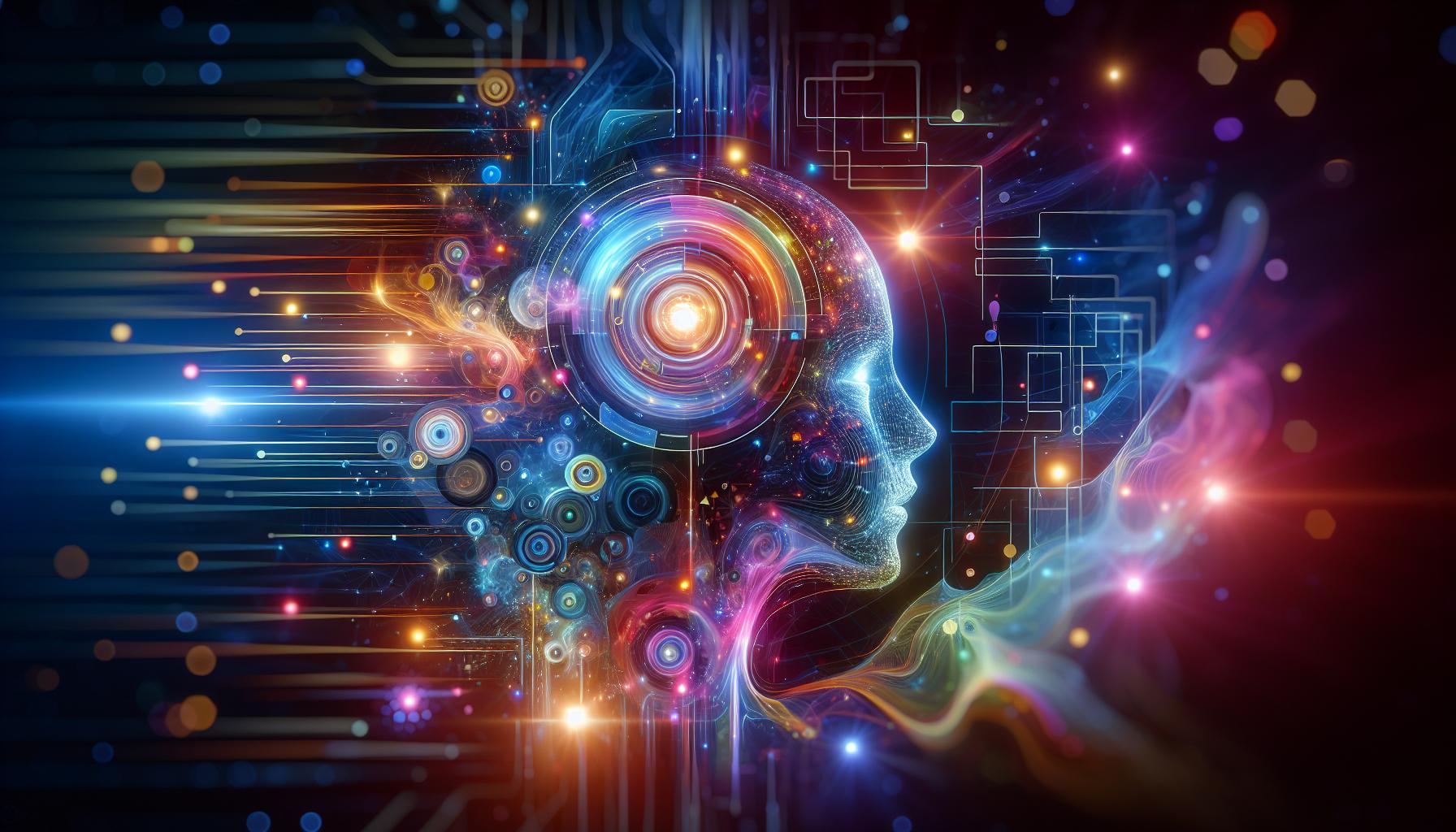
Leveraging Keywords: Essential Tips for Effective Prompting
Crafting effective prompts is crucial for getting the best results from Midjourney. By strategically using keywords, you can significantly enhance the output quality of your prompts, ensuring they are both precise and engaging. Understanding how to leverage these keywords creates a clearer communication channel between you and the AI, leading to results that closely match your creative vision.
Understanding Your Audience
One of the first steps to effective prompting is understanding what your target audience is looking for. This means conducting research to identify relevant terms and phrases that your audience frequently uses. By incorporating these keywords into your prompts, you can tailor responses that resonate with users’ interests and needs. Use tools like Google Trends or keyword research platforms to discover popular search terms related to your topic.
Utilizing Descriptive Language
When formulating prompts, aim for descriptive and vivid language that encompasses various aspects of your topic. Use strong adjectives and specific nouns to guide Midjourney’s interpretation. For instance, instead of asking for a “landscape,” you might specify “a vibrant sunset over a tranquil lake surrounded by lush mountains.” This not only helps the AI understand your vision but also enhances the chance of producing visually compelling images.
Incorporating Variations and Synonyms
Incorporating variations and synonyms of your main keywords can further refine the output. Different words can evoke unique associations and concepts within the AI’s processing capabilities. For example, instead of just using “futuristic city,” you could include variations like “advanced metropolis,” “sci-fi urban landscape,” or “high-tech urban environment.” This approach maximizes the diversity of results you receive, helping you hone in on the precise representation you’re aiming for.
Iterative Refinement
Lastly, don’t hesitate to engage in iterative refinement of your prompts. After receiving an initial output, analyze it to determine what worked well and what didn’t. Adjust the keywords based on the results-adding new terms or modifying existing ones. This not only helps in achieving a more refined outcome but also enhances your skill in crafting effective prompts over time. The process of fine-tuning is essential to getting exactly what you want from Midjourney’s capabilities.
By following these strategic steps, you’ll not only enhance your prompting skills but also maximize the potential of Midjourney to create stunning and accurate visual representations of your ideas.
Enhancing Your Prompts with Context: The Power of Detail
To maximize the effectiveness of your prompts when using AI tools like Midjourney, incorporating rich context is crucial. The level of detail you provide shapes the output in significant ways. When prompts are vague or overly simplistic, the model often generates generic responses that may not align with your expectations. However, by enhancing your prompts with specific details, you can tailor the AI’s output to better meet your needs. This precision is key to achieving the desired results, transforming your experience from hit-or-miss to consistently satisfying.
The Importance of Context
Detailing your requests helps the AI understand precisely what you want. For example, instead of asking for a picture of a “dog,” specifying “a golden retriever playing in a sunny park with children” provides the AI with a framework to create a scene that resonates more closely with your vision. By articulating context through descriptive phrases, you establish parameters that guide the AI toward more relevant outputs. Contextual nuances, such as emotions, actions, and settings, enrich the interaction with Midjourney, leading to uniquely tailored creations.
Practical Techniques to Enhance Your Prompts
To effectively incorporate context in your prompts, consider using the following techniques:
- Use Specific Adjectives: Instead of “beautiful landscape,” opt for “breathtaking mountainous landscape during sunrise.”
- Include Dynamic Action: Describe actions to give a sense of movement, such as “a cat leaping gracefully onto a sunlit windowsill.”
- Set the Mood: Utilize words that convey feelings, like “a cozy coffee shop filled with warm light and happy conversations.”
- Specify Style and Genre: Whether it’s “impressionist painting” or “cyberpunk theme,” style influences the visual outcome dramatically.
By adopting these techniques, you not only assist the AI in generating high-quality and context-rich images but also enhance your overall creative process. Building prompts with clear, enriched details that relate closely to your vision significantly boosts your ability to get exactly what you want from Midjourney. The more specific the context, the better aligned the AI’s responses will be with your artistic and creative needs.
Experimentation and Iteration: Finding Your Unique Style
The journey of discovering your artistic voice is not a straight path; instead, it’s woven with moments of serendipity and challenges. In the realm of visual creation-especially with tools like Midjourney-experimenting with your prompts can unlock a wealth of creativity and help you hone in on your unique style. The beauty of this process lies in the versatility of AI; the more you engage in tweaking and refining your prompts, the more distinctive your results will become.
To embark on this exploration, start by keeping a record of your experimentation. Maintain a digital or physical journal where you document various prompts that yield interesting visuals. This practice not only helps track what worked well but also reveals patterns in your creative preferences. As you experiment, consider these actionable steps:
- Vary Descriptive Language: Use synonyms and relevant adjectives that resonate with your artistic vision. For instance, instead of “beautiful sunset,” try “serene dusk glowing with vibrant hues.”
- Modify Contextual Elements: Alter the setting or choose a different time of day to see how context influences the artwork. For instance, switch from “mountain landscape” in daylight to “mysterious mountain scene under a starlit sky.”
- Experiment with Style and Emotion: Specify styles you admire or emotional tones you wish to convey. Describing the emotion can dramatically alter the outcome-“a joyful festival” versus “a melancholic fair.”
By utilizing these strategies, your prompting will evolve, leading to more dynamic and personalized results in Midjourney. Here’s a simple table displaying how variations in prompts can lead to distinct artistic interpretations:
| Original Prompt | Variation 1 | Variation 2 |
|---|---|---|
| Beach at sunset | Tranquil beach during golden hour | Stormy beach scene at twilight |
| Forest path | Misty forest trail in autumn | Enchanted woodland path under moonlight |
| City skyline | Futuristic cityscape at dawn | Gritty urban landscape at night |
Engage in continuous iteration by refining prompts after examining the outputs. If a particular image resonates with you, dissect the prompt that led to it-analyzing its structure, wording, and detail level. This feedback loop will not only increase your understanding of how Midjourney interprets your input but also move you closer to mastering the art of precise prompting. Over time, you’ll discover the nuances that embody your unique artistic flair, bringing you exactly what you want from your creative sessions.
Analyzing Midjourney Outputs: Learning from AI Responses
Understanding the outputs from Midjourney can feel like decrypting a complex code. Yet, each image generated is a response to the prompts you’ve crafted. By learning how to interpret and analyze these results, you can refine your approach to precision prompting, ultimately ensuring that you get exactly what you want from Midjourney.
To start analyzing these AI responses, it’s essential to assess the relevance of the generated images compared to the input prompts. Consider the following steps to improve your analyses:
- Compare objectives and outputs: Review your initial goals and the images produced. Are they aligned? What aspects of your prompt were interpreted differently?
- Identify patterns: Look for common elements in successful outputs. Does it seem like certain adjectives yield better results? Tracking these can help enhance future prompts.
- Take notes on variations: Document any slight changes to your prompts and their corresponding outputs. This practice helps build a reference guide for future sessions.
Utilizing Feedback Loops
Creating a feedback loop with AI is vital in learning how to get exactly what you want from Midjourney. After generating images, provide feedback on the outputs and iterate on your prompts. For example, if you initially requested “a serene landscape,” but received a busy urban scene, try adjusting your prompt to “a peaceful valley at sunrise.” An iterative approach not only enhances results but also refines your skill in precision prompting.
| Initial Prompt | Output Characteristics | Revised Prompt |
|---|---|---|
| A serene landscape | Urban buildings, lack of greenery | A peaceful valley at sunrise |
| Colorful flowers in a field | Bland colors, minimal flower detail | Vibrant wildflowers in a sunlit meadow |
| A modern workspace | Cluttered desk with outdated tech | An airy office with sleek furniture and natural light |
Knowing how to dissect and learn from the outputs generated by Midjourney not only aids in perfecting your prompts but also transforms the way you engage with the AI. Each interaction provides a rich learning experience. Trust in this iterative process; over time, you’ll hone your ability to evoke precisely the images you envision.
Real-World Examples: Success Stories of Precision Prompting
The world of AI-generated imagery has seen remarkable transformations thanks to precision prompting techniques. Creatives across various industries are now harnessing the power of platforms like Midjourney, pushing the boundaries of their visual projects in ways that were previously unimaginable. By fine-tuning their commands, users have access to a treasure trove of stunning images that cater to their specific needs. Here are some inspiring success stories that showcase the potential of precision prompting in real-world applications.
Elevating Marketing Campaigns
One exemplary case involved a marketing agency looking to create a unique visual identity for a new product launch. Armed with an understanding of how to get exactly what they wanted from Midjourney, the team’s creative director crafted detailed prompts that included the target demographic, desired emotions, and color schemes. The result was a series of vibrant images that not only captured the essence of the product but also resonated deeply with the intended audience. By using precise language, such as “a joyful, inspiring scene of families enjoying the product in a sunlit park,” they were able to generate visuals that surpassed their initial expectations.
Boosting Content Creation
Content creators are also leveraging precise prompting to produce high-quality graphics for blogs and social media. For instance, a lifestyle blogger focused on sustainable living used targeted prompts to generate stunning visuals of eco-friendly products integrated into everyday life. By integrating specifications like “minimalist kitchen with bamboo utensils,” she successfully created images that aligned perfectly with her brand message. This strategy not only enhanced her blog aesthetically but also significantly boosted engagement metrics, as readers were drawn to the beautiful imagery that matched her content vernacular.
Artistic Exploration and Portfolio Development
Artists exploring new mediums have found immense value in Midjourney’s capabilities. A digital artist, keen on diversifying their portfolio, began experimenting with precision prompts designed to blend traditional styles with modern themes. By specifying complex combinations such as “a surreal landscape merging Van Gogh’s style with futuristic elements,” they unlocked an innovative pathway to create unique pieces. The resulting artworks not only showcased their versatility but also attracted attention from galleries and online platforms, demonstrating how precision prompting can lead to unexpected artistic breakthroughs.
Achieving desired outcomes with Midjourney is ultimately about being intentional and descriptive in commands. As these success stories illustrate, whether for marketing, content creation, or artistic expression, the key lies in knowing how to get exactly what you want through precision prompting. By articulating visions clearly and employing detailed specifications, creators can unlock limitless potential and foster impactful visuals that resonate with their audiences.
Expanding Your Creative Toolkit: Beyond Basic Prompting Techniques
In the ever-evolving landscape of creative tools, mastering the art of precise prompting can significantly elevate your projects. Understanding how to harness the full potential of Midjourney goes beyond simply entering basic commands. Creators who want to truly excel need to expand their capabilities through a variety of advanced techniques that can be seamlessly integrated into their workflow.
Diving Deeper into Descriptive Language
One of the most effective methods for enhancing your prompting skills is by enriching your vocabulary and improving your descriptive language. Instead of merely stating what you want, consider employing a multifaceted approach. This involves the incorporation of sensory details, emotional undertones, and contextual cues.
For example, instead of saying “create a sunset,” try prompting with “illustrate a breathtaking sunset over a tranquil beach, with hues of vibrant orange and soft pink blending into a deep purple sky.” The additional details guide the AI to produce a more nuanced image that aligns with your vision.
- Color Schemes: Include specific color palettes for more cohesive outputs.
- Emotional Tone: Indicate the mood, such as “serene” or “dramatic,” to influence the atmosphere of the result.
- Detailed Composition: Describe the arrangement and elements, such as “a lone figure standing under a palm tree, gazing at the horizon.”
Utilizing Variables and Conditional Statements
Enhance your prompts further by incorporating variables or conditional statements. This technique allows for real-time adjustments within your projects. For instance, you might indicate, “If the scene feels too crowded, simplify the foreground.” This not only fine-tunes the focus of your image but invites the AI to think critically about the composition.
| Technique | Description | Example |
|---|---|---|
| Variable Prompts | Adjust elements based on the output, allowing for creative flexibility. | “Show me a cityscape at night; if there are too many buildings, focus on a single silhouette.” |
| Conditional Statements | Guide the AI on what adjustments to make depending on the outcome. | “Create a forest in the early morning; darken the shadows if the sunlight is too strong.” |
By delving into these advanced strategies, you can truly understand how to get exactly what you want from Midjourney through precision prompting. As you refine your approach, you’ll discover that your creative toolkit becomes richer and more versatile, enabling you to generate stunning visuals that resonate profoundly with your intended audience.
Frequently Asked Questions
How to Get Exactly What You Want from Midjourney? Precision Prompting?
To get exactly what you want from Midjourney, focus on being as detailed and clear in your prompts as possible. Use specific adjectives, styles, and settings to guide the AI in generating images that closely align with your vision.
Midjourney operates by interpreting your inputs, so including descriptive language is essential. For example, instead of asking for a “dog,” specify “a playful golden retriever in a sunny park.” This level of detail allows the AI to create tailored results. For more tips, check out our guide on creating effective prompts.
What is precision prompting in Midjourney?
Precision prompting in Midjourney refers to the practice of crafting highly specific and detailed prompts to achieve desired image outcomes. It enhances the AI’s understanding and increases the likelihood of generating images that match your vision.
By using words that convey emotion, color, and composition, you give the AI clear instructions. For instance, saying “a serene landscape at sunset with purple mountains” offers much more direction than simply saying “landscape.” This increases the accuracy of the generated image.
Why does my prompt not produce the expected results in Midjourney?
Your prompt may not yield the expected results due to vagueness or ambiguity in your descriptions. If the AI can’t interpret your instructions clearly, it may create an image that’s far from your vision.
To improve outcomes, revise your prompts by adding specific details or emphasizing certain elements. For example, instead of just saying “city skyline,” consider “a vibrant city skyline at night with colorful lights.” This clarity helps the AI to align its output with your expectations.
Can I use examples in my prompts for Midjourney?
Yes, incorporating examples in your prompts can assist Midjourney in understanding your vision better. You can refer to styles, artists, or particular artwork to guide the creation process.
For instance, you might say, “Create a surreal landscape inspired by Salvador Dalí,” which not only specifies a style but also invokes a well-known reference, enhancing the AI’s ability to produce relevant images.
What are some tips for effective Midjourney prompts?
Effective Midjourney prompts should be clear, descriptive, and focused on key elements you wish to see in the image. Using methods like *adjective-noun combinations* or specifying actions can vastly improve results.
For example, rather than requesting “a cat,” consider “a fluffy cat lounging on a warm windowsill, basking in the sunlight.” This specificity directs the AI better. Additionally, using terms relevant to your theme can arm the AI with contextual understanding.
How does Midjourney interpret my prompts?
Midjourney interprets prompts using algorithms that analyze the text’s content, context, and structure. The AI breaks down your request to generate images that best fit the compiled data.
The more nuanced and descriptive your prompt is, the better the AI can understand and visualize what you’re asking for. Leveraging descriptive language helps the AI grasp elements like mood, color, and style, allowing for richer and more satisfying image results.
Can I improve my skills in precision prompting over time?
Absolutely! Improving your skills in precision prompting takes practice. As you experiment with different styles and types of prompts, you’ll develop a better intuition for what works best with Midjourney.
Keep a record of successful prompts and note what made them effective. Also, participate in community forums where you can learn from others’ experiences and discover new techniques. This iterative process will greatly enhance your prompting skills.
In Retrospect
As we wrap up our exploration of precision prompting in Midjourney, it’s essential to remember that effective communication with AI can significantly enhance the quality of your visual outputs. By understanding the nuances of your prompts and incorporating specific keywords, you can convey your ideas more clearly, leading to more accurate and compelling images.
Start by experimenting with detailed descriptions, focusing on aspects like style, color, and emotion to guide the AI more effectively. Don’t hesitate to iterate on your prompts-experimenting with variations can yield surprising and inspiring results. Real-world examples show us that even slight adjustments in wording can transform a generic output into something truly remarkable.
We encourage you to continue your journey into the world of AI-generated imagery. Dive deeper into the intricacies of Midjourney, engage with communities, and share your creations. The more you explore, the more you’ll unlock the potential of these innovative tools. Embrace the process, stay curious, and let your creativity shine through the power of precision prompting!

